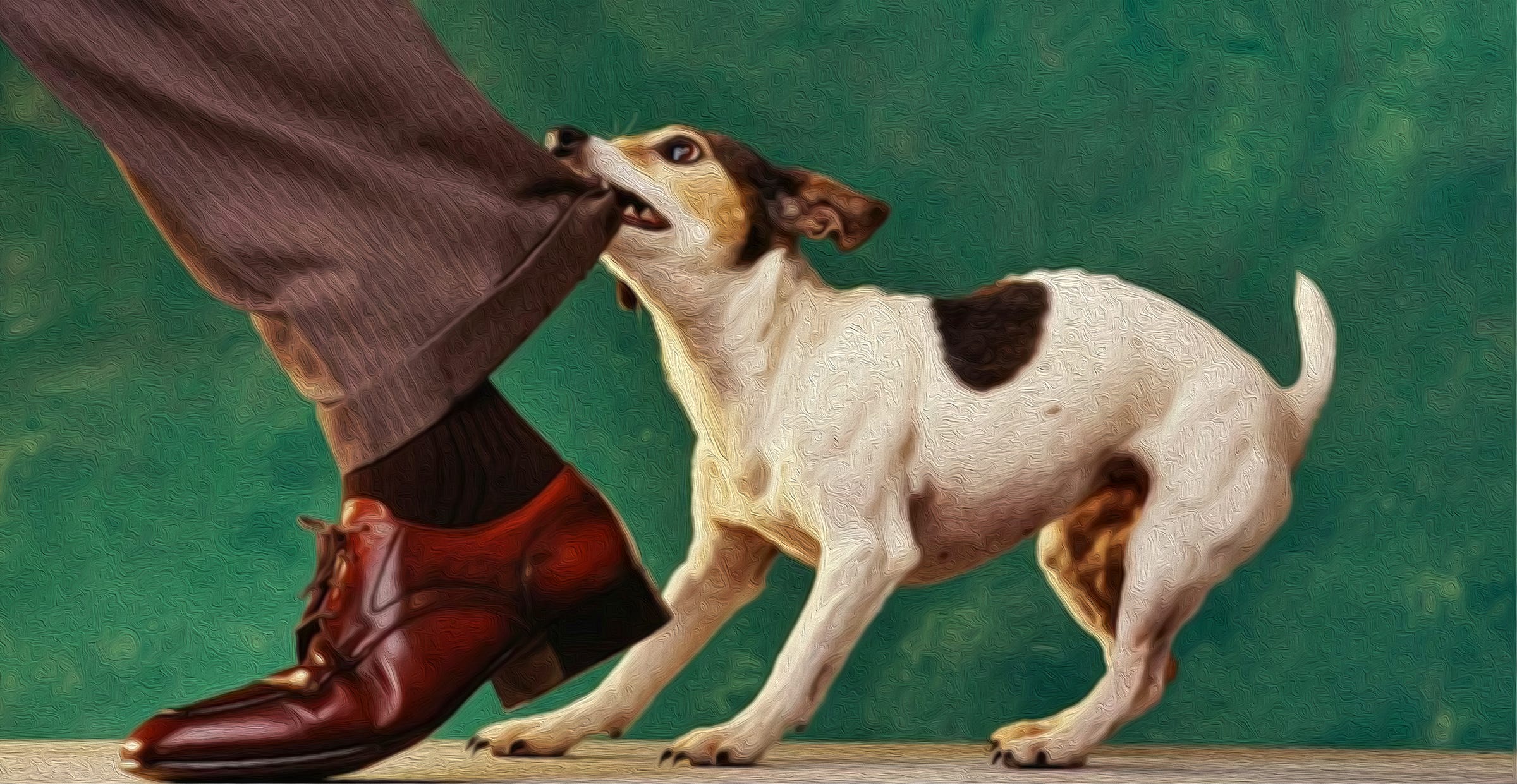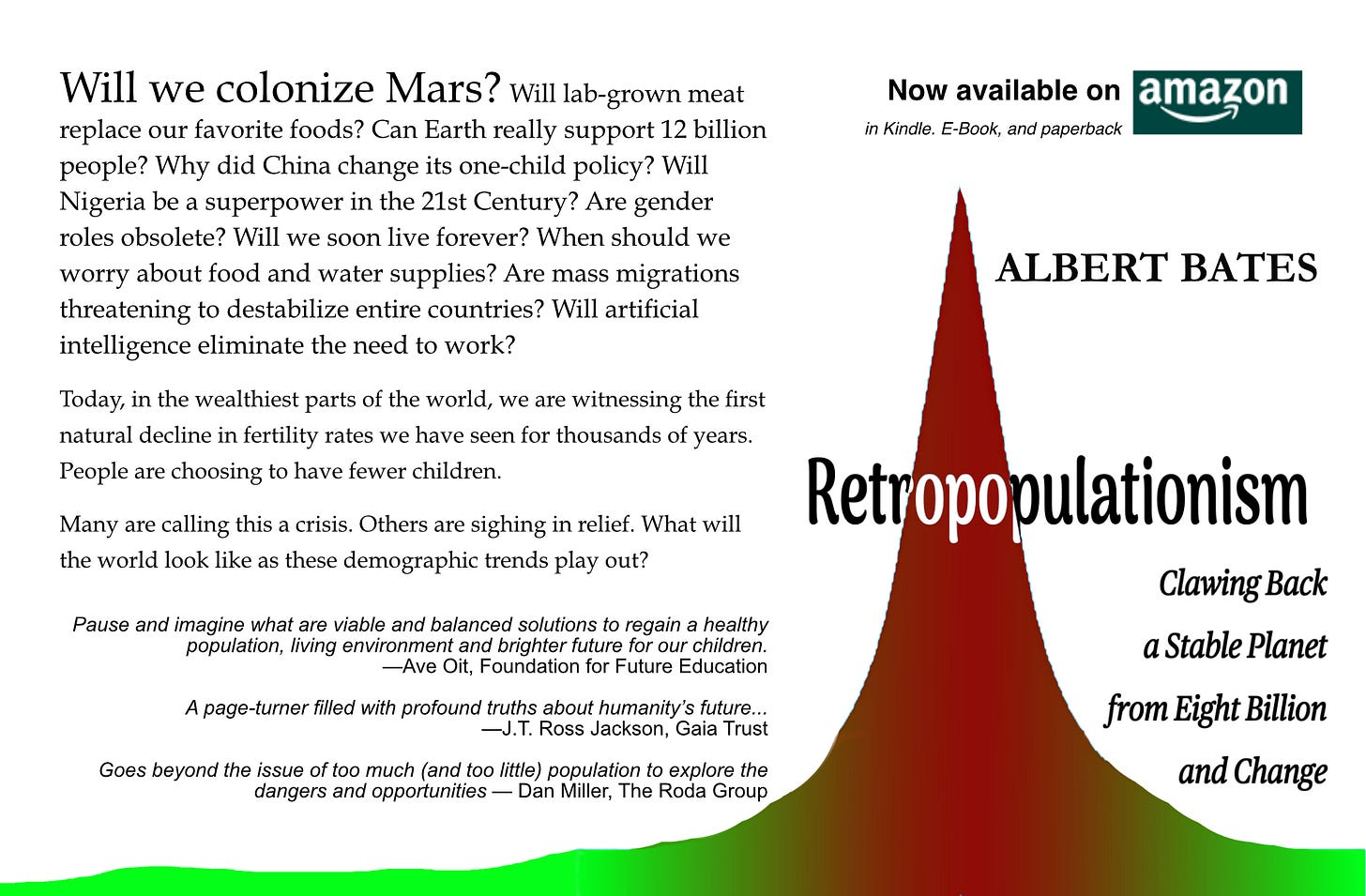Is your best friend your dog? Really?
Global heating increases the inclination of dogs to bite the hand that feeds them
Climate change is affecting our lives in many ways. Some are expected and, indeed, were predicted two centuries or more ago. Others may come as a surprise. Our relationship with man’s best friend falls into that second category.
If you see two life forms—one of them's making a poop, the other one's carrying it for him—who would you assume is in charge? — Jerry Seinfeld
That Seinfeld gag line speaks to a larger truth about people—that it is almost as though we have a deeply embedded desire to be slaves.
Maybe that explains the popularity of Donald Trump and other charismatic cult leaders.
We have ancient relationships with other animals, but few where otherwise prim people regularly go around fingering plastic bags on their scat. Animal love is deeply embedded in us. And more than that, at a microbial level, there are more other animals’ DNA inside our bodies than our own DNA, by a large margin.
Scaling up from our cells, if you come from the overdeveloped world, you probably had a pet as a child. Most of us did. In the USA, more than half of households own a dog. In the Philippines, there are as many dogs as people.
Of course, it is not like that everywhere. In Zambia there is one dog for every 45 humans. In Egypt, it’s about five dogs per thousand. Egypt has a cat problem but that is a separate story.
After the US sent contaminated corn to Zambia in 2002, people ate dogs. Can you blame them? It was a famine. The Chinese proverb goes, “If it has legs and is not a table, I eat it. If it has scales and is not a bathroom, I eat it. If it has wings and is not an airplane, I eat it.” While buying, selling and trafficking dogs for meat is now illegal in Zambia, there remains a black market for smoked dog meat.
We recently celebrated the publication of my new book, Retropopulationism. I’ll be doing a West Coast tour later this winter. The book explores the likely trajectory of human demographics over the coming decades as we settle into the effects of climate change, endocrine disrupters, peak everything, and the biophysical economics of overshoot. Among the subjects I did not include but reserved for a future book was the problem of pets.
I asked Mr. Google what city had the most dogs. He said, “a study conducted by Protect My Paws, a pet insurance comparison platform, found that Houston is home to the world's highest ratio of dogs to humans at 52.1 dogs per 100 humans.” That sentence captured my attention but not for the reason I’d asked. It was about the words, “a pet insurance comparison platform.”
The American Kennel Association, which has no motive to inflate such numbers, estimates the lifetime cost of a dog, from puppy to tottering, incontinent elder, to be anywhere from $17,650 to $93,520, depending on size, breed, and services required. No wonder they have insurance. Even adjusted for inflation, the amount of money USAnians per capita spend on pets each year has more than doubled in the last 30 years. Pet insurance is now a thing.
One might think the high cost of maintenance would have some effect on dogs in the Two-Thirds World, but apparently not. A 2017 study published in PLOS reported:
As pet ownership increases in some developing countries, especially China, and trends continue in pet food toward higher content and quality of meat, globally, pet ownership will compound the environmental impacts of human dietary choices. Reducing the rate of dog and cat ownership, perhaps in favor of other pets that offer similar health and emotional benefits, would considerably reduce these impacts.
Globally, dogs now outweigh all wild land animals and rival pigs in their number. For the most part, we are not eating them, or even putting them to the work that most were bred for. They are there to provide companionship, entertain us and alleviate our loneliness.
Loneliness alleviation comes at a cost not generally measured in GDP. It might better be indexed to elephants, bison, and tigers. Three less lonely weeks equals one less polar bear. In this way, wildlife globally has fallen to less than 10 percent of the combined tonnage of hominid men, women and children.
Dogs, whose population is 10% of the human population and growing, bear a share of the responsibility. Their biomass already outweighs all the elephants, bison, tigers and bears. And while they may not eat elephants and tigers, they are starting to eat more bison and the occasional bear.
People are just 0.01% of all life but have destroyed 83% of the rest. We don’t do it all with guns, chainsaws or combines. We do it every time we adopt a cuddly fur-ball from the animal shelter, pet store or puppy mill.
These domesticated-to-wild mass ratios emphasize the active role humans play in shaping the abundance of mammals on Earth.
— National Academy of Sciences
Climate impacts
By some estimates, dog food consumption results in about 64 million tons of greenhouse gases being pumped into the atmosphere—about the same as 13.6 million cars. Other studies look at the full life cycle of products and secondary impacts—plastic poop baggies and vet bills—and put that number much higher, roughly the same as combined emissions from all but the top tier of polluting nations.
In the US, dogs represent 30 percent of meat consumption, pushing the USA to fifth most carnivorous country in the world. USAnian dogs consume about as many calories as the population of France. After digestion, that produces about 5 million tons of dog poo per year, roughly the same annual fecal output as their 90 million dog owners.
UCLA geography professor Gregory Okin says “Maybe we could all have little ponies. We’d all get more exercise taking them for walks, and they would also mow the lawn.”
Feeling the bite
A study of 69,525 reported dog bite incidents found that dog bite incidence increased with increasing ozone, temperature and UV irradiation, and decreased on rainy days and on holidays.
Many dogs cannot adapt to heat. With warming temperatures, many dogs—indeed, many breeds—will not survive. One hesitates to guess how many dog owners perished racing to retrieve a beloved pet as wildfires bore down upon them in the past few years, or how many more will die that way in the future.
Three years ago, I posted here:
To reach a carbon footprint of net zero by 2050, the US will need to cut its pet population by some 10 million dogs and 10 million cats every year for a decade and then by some 200,000 per year in the out years towards mid-century. We’ll have to get to one dog and one cat for every 300 people .
Are any dog owners prepared to do that? Are they even imagining the need?
My own experience with dog-owner friends leaves me bemused and curious. Bemused, whenever I watch them forced to bend to pick up fresh dog-do. Or whenever they have to interrupt a story they are telling friends because they can’t be heard over the din of the barking because their beloved just spied a squirrel through the window or a neighbor coming to the door. Curious, because I cannot understand this irrational drive to self-enslavement. Why would someone give up their freedom, quiet and ethics, and pay tens of thousands of dollars per year for that privilege?
Maybe it is, as Seinfeld suggested, that dogs are the higher life form and we were born to serve.
References
Dey, Tanujit, Antonella Zanobetti, and Clas Linnman. "The risk of being bitten by a dog is higher on hot, sunny, and smoggy days." Scientific reports 13.1 (2023): 8749.
Greenspoon, Lior, et al. "The global biomass of wild mammals." Proceedings of the National Academy of Sciences 120.10 (2023): e2204892120.
Okin, G.S., Environmental impacts of food consumption by dogs and cats. PLoS One. 2017 Aug 2;12(8):e0181301. doi: 10.1371/journal.pone.0181301. eCollection 2017.
Sheldrake, R., Dogs That Know When Their Owners Are Coming Home. New York: Three Rivers Press, 1999.
Salonen, Milla. "Complex traits, complex results: The genetic, demographic, and environmental factors of cat and dog behaviour." (2020).

Meanwhile, let’s end these wars. I continue to solicit help to settle Ukrainian refugees into ecovillages and permaculture farms. Please donate to the Green Road by going to http://PayPal.me/greenroad2022 or by directing donations to us at greenroad@thefarm.org. There is more info on the Global Village Institute website, or you can listen to this NPR Podcast and read these recent articles in Mother Jones and The World. Thank you for your help.
To support kibbutz recovery please contribute here. To support the Palestinian homeless in Gaza and the West Bank, please donate here.
Recent weather events in the UAE and Saudi Arabia should have been enough to focus the attention of delegates going to COP28 in Dubai. Will that be enough? Not even close. But we have the needed tools to fix this. We’ve had them for centuries. It is well past the time we used them. That’s why I write. That is why you support me. Thanks!
All Patreon donations and Blogger, Medium, or Substack subscriptions are needed and welcomed. You are how we make this happen. Your contributions are being made to Global Village Institute, a tax-deductible 501(c)(3) charity.
Thank you for reading The Great Change.
My latest book, Retropopulationism: Clawing Back a Stable Planet from Eight Billion and Change, is now available. Complimentary copies should reach Power Up! Patreon donors soon.
And thanks once more to everyone for your support of the Global Village Institute. Please feel free to share this post or any part of it.
The Great Change is a reader-supported publication. To receive new posts and support my work, consider becoming a free or paid subscriber.










